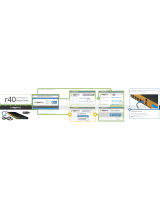
2
Contents
Package Contents .................................................................................................. 4
Device Features ....................................................................................................................................... 4
Mounting Guide ........................................................................................................................................ 5
Access Point Setup Guide ................................................................................... 6
Setup to manage your access point with Linksys cloud server .............................................. 6
Setup to manage your access point locally with browser-based admin tool ..................... 7
Cloud Management Interface ............................................................................. 8
Networks .................................................................................................................................................... 8
Overview .................................................................................................................................................. 10
Access Points ........................................................................................................................................ 11
Wireless .................................................................................................................................................... 16
Clients ....................................................................................................................................................... 21
Settings .................................................................................................................................................... 23
Account settings................................................................................................................................... 24
Inventory .................................................................................................................................................. 27
Local Management Interface ........................................................................... 28
Setup Wizard (Local Administration) ............................................................................................. 28
Administration ....................................................................................................................................... 32
LAN ............................................................................................................................................................ 41
Wireless .................................................................................................................................................... 47
Captive Portal ........................................................................................................................................ 80
Cluster ...................................................................................................................................................... 89
System Status ....................................................................................................................................... 96
Maintenance ........................................................................................................................................ 106
Appendix A - Troubleshooting ...................................................................... 112
Overview ............................................................................................................................................... 112
General Problems .............................................................................................................................. 112
Appendix B - About Wireless LANs ............................................................. 114
Overview ............................................................................................................................................... 114
Wireless LAN Terminology ............................................................................................................. 114




















